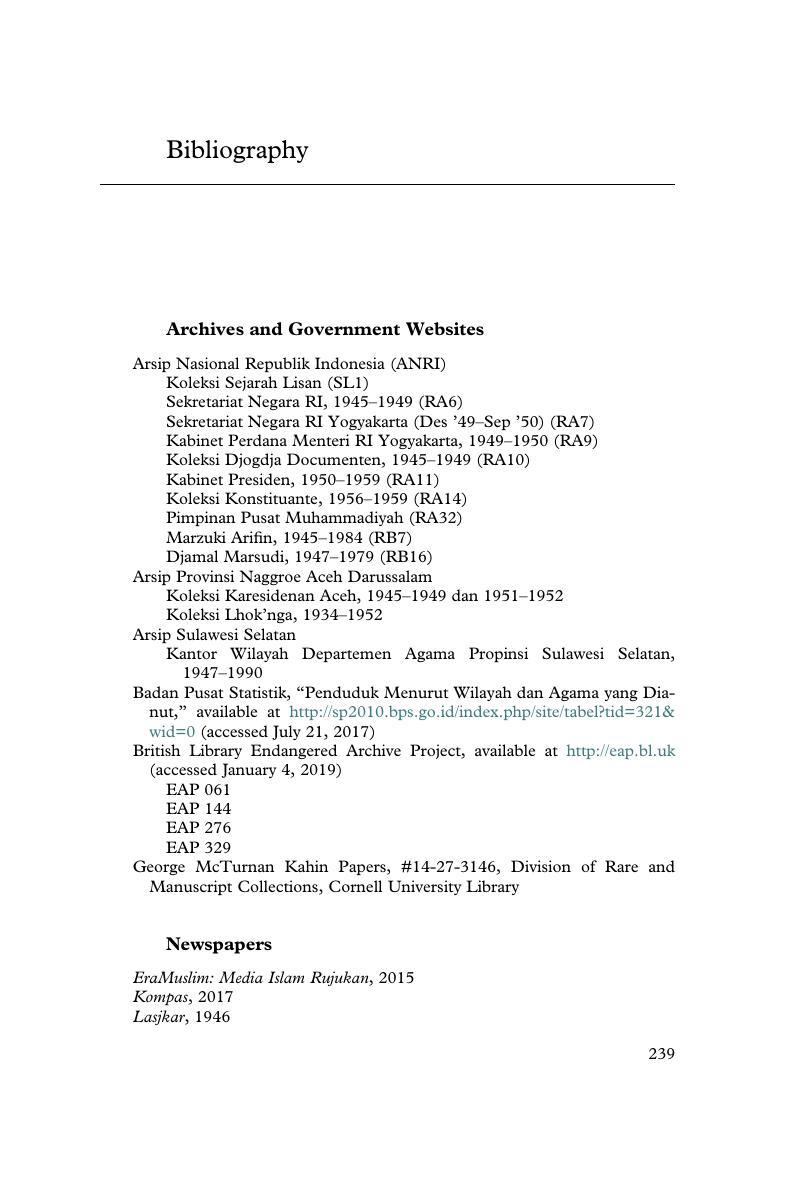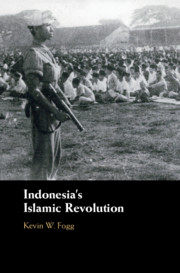Book contents
- Indonesia’s Islamic Revolution
- Indonesia’s Islamic Revolution
- Copyright page
- Contents
- Acknowledgments
- A Note on Indonesian Names
- Map
- Introduction
- 1 Islam in Indonesia before the Revolution
- Part I Islam in Indonesia’s War of Independence
- Part II Islam in Indonesia’s Political Revolution
- Conclusion
- Appendix: Oral History Sources
- Glossary
- Bibliography
- Index
- References
Bibliography
Published online by Cambridge University Press: 18 November 2019
- Indonesia’s Islamic Revolution
- Indonesia’s Islamic Revolution
- Copyright page
- Contents
- Acknowledgments
- A Note on Indonesian Names
- Map
- Introduction
- 1 Islam in Indonesia before the Revolution
- Part I Islam in Indonesia’s War of Independence
- Part II Islam in Indonesia’s Political Revolution
- Conclusion
- Appendix: Oral History Sources
- Glossary
- Bibliography
- Index
- References
Summary

- Type
- Chapter
- Information
- Indonesia's Islamic Revolution , pp. 239 - 256Publisher: Cambridge University PressPrint publication year: 2019



